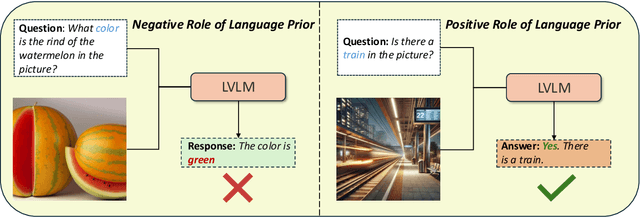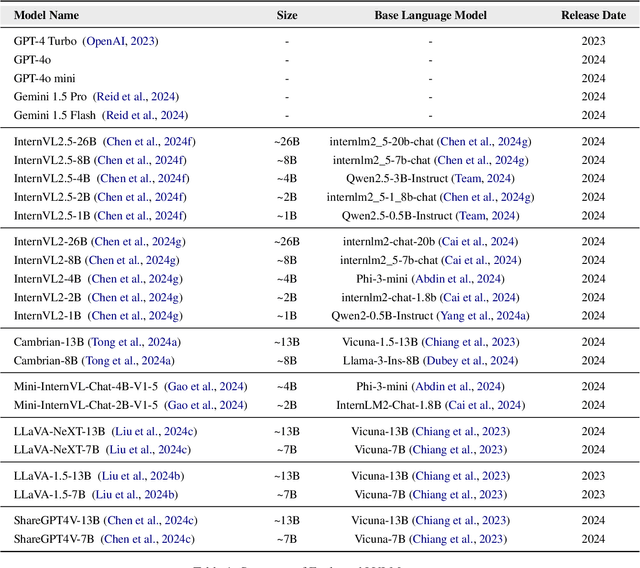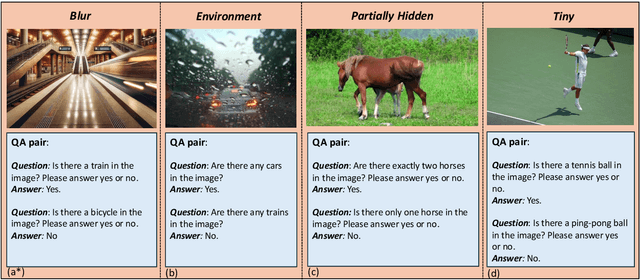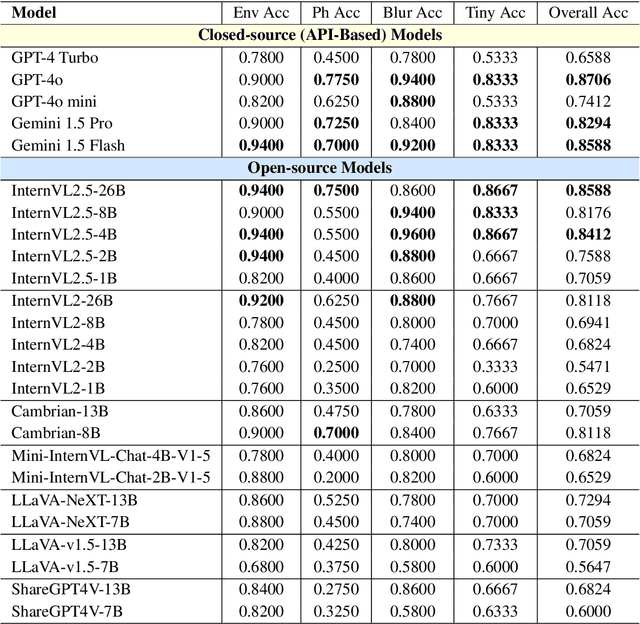Qi Shi
SpaceTrack-TimeSeries: Time Series Dataset towards Satellite Orbit Analysis
Jun 16, 2025Abstract:With the rapid advancement of aerospace technology and the large-scale deployment of low Earth orbit (LEO) satellite constellations, the challenges facing astronomical observations and deep space exploration have become increasingly pronounced. As a result, the demand for high-precision orbital data on space objects-along with comprehensive analyses of satellite positioning, constellation configurations, and deep space satellite dynamics-has grown more urgent. However, there remains a notable lack of publicly accessible, real-world datasets to support research in areas such as space object maneuver behavior prediction and collision risk assessment. This study seeks to address this gap by collecting and curating a representative dataset of maneuvering behavior from Starlink satellites. The dataset integrates Two-Line Element (TLE) catalog data with corresponding high-precision ephemeris data, thereby enabling a more realistic and multidimensional modeling of space object behavior. It provides valuable insights into practical deployment of maneuver detection methods and the evaluation of collision risks in increasingly congested orbital environments.
ReCUT: Balancing Reasoning Length and Accuracy in LLMs via Stepwise Trails and Preference Optimization
Jun 12, 2025Abstract:Recent advances in Chain-of-Thought (CoT) prompting have substantially improved the reasoning capabilities of Large Language Models (LLMs). However, these methods often suffer from overthinking, leading to unnecessarily lengthy or redundant reasoning traces. Existing approaches attempt to mitigate this issue through curating multiple reasoning chains for training LLMs, but their effectiveness is often constrained by the quality of the generated data and prone to overfitting. To address the challenge, we propose Reasoning Compression ThroUgh Stepwise Trials (ReCUT), a novel method aimed at balancing the accuracy and length of reasoning trajectory. Specifically, ReCUT employs a stepwise exploration mechanism and a long-short switched sampling strategy, enabling LLMs to incrementally generate diverse reasoning paths. These paths are evaluated and used to construct preference pairs to train two specialized models (Gemini LLMs)-one optimized for reasoning accuracy, the other for shorter reasoning. A final integrated model is obtained by interpolating the parameters of these two models. Experimental results across multiple math reasoning datasets and backbone models demonstrate that ReCUT significantly reduces reasoning lengths by approximately 30-50%, while maintaining or improving reasoning accuracy compared to various baselines. All codes and data will be released via https://github.com/NEUIR/ReCUT.
C-PATH: Conversational Patient Assistance and Triage in Healthcare System
Jun 07, 2025Abstract:Navigating healthcare systems can be complex and overwhelming, creating barriers for patients seeking timely and appropriate medical attention. In this paper, we introduce C-PATH (Conversational Patient Assistance and Triage in Healthcare), a novel conversational AI system powered by large language models (LLMs) designed to assist patients in recognizing symptoms and recommending appropriate medical departments through natural, multi-turn dialogues. C-PATH is fine-tuned on medical knowledge, dialogue data, and clinical summaries using a multi-stage pipeline built on the LLaMA3 architecture. A core contribution of this work is a GPT-based data augmentation framework that transforms structured clinical knowledge from DDXPlus into lay-person-friendly conversations, allowing alignment with patient communication norms. We also implement a scalable conversation history management strategy to ensure long-range coherence. Evaluation with GPTScore demonstrates strong performance across dimensions such as clarity, informativeness, and recommendation accuracy. Quantitative benchmarks show that C-PATH achieves superior performance in GPT-rewritten conversational datasets, significantly outperforming domain-specific baselines. C-PATH represents a step forward in the development of user-centric, accessible, and accurate AI tools for digital health assistance and triage.
ClueAnchor: Clue-Anchored Knowledge Reasoning Exploration and Optimization for Retrieval-Augmented Generation
May 30, 2025Abstract:Retrieval-Augmented Generation (RAG) augments Large Language Models (LLMs) with external knowledge to improve factuality. However, existing RAG systems frequently underutilize the retrieved documents, failing to extract and integrate the key clues needed to support faithful and interpretable reasoning, especially in cases where relevant evidence is implicit, scattered, or obscured by noise. To address this issue, we propose ClueAnchor, a novel framework for enhancing RAG via clue-anchored reasoning exploration and optimization. ClueAnchor extracts key clues from retrieved content and generates multiple reasoning paths based on different knowledge configurations, optimizing the model by selecting the most effective one through reward-based preference optimization. Experiments show that ClueAnchor significantly outperforms prior RAG baselines in reasoning completeness and robustness. Further analysis confirms its strong resilience to noisy or partially relevant retrieved content, as well as its capability to identify supporting evidence even in the absence of explicit clue supervision during inference.
YH-MINER: Multimodal Intelligent System for Natural Ecological Reef Metric Extraction
May 29, 2025Abstract:Coral reefs, crucial for sustaining marine biodiversity and ecological processes (e.g., nutrient cycling, habitat provision), face escalating threats, underscoring the need for efficient monitoring. Coral reef ecological monitoring faces dual challenges of low efficiency in manual analysis and insufficient segmentation accuracy in complex underwater scenarios. This study develops the YH-MINER system, establishing an intelligent framework centered on the Multimodal Large Model (MLLM) for "object detection-semantic segmentation-prior input". The system uses the object detection module (mAP@0.5=0.78) to generate spatial prior boxes for coral instances, driving the segment module to complete pixel-level segmentation in low-light and densely occluded scenarios. The segmentation masks and finetuned classification instructions are fed into the Qwen2-VL-based multimodal model as prior inputs, achieving a genus-level classification accuracy of 88% and simultaneously extracting core ecological metrics. Meanwhile, the system retains the scalability of the multimodal model through standardized interfaces, laying a foundation for future integration into multimodal agent-based underwater robots and supporting the full-process automation of "image acquisition-prior generation-real-time analysis".
AutoReproduce: Automatic AI Experiment Reproduction with Paper Lineage
May 27, 2025Abstract:Efficient experiment reproduction is critical to accelerating progress in artificial intelligence. However, the inherent complexity of method design and training procedures presents substantial challenges for automation. Notably, reproducing experiments often requires implicit domain-specific knowledge not explicitly documented in the original papers. To address this, we introduce the paper lineage algorithm, which identifies and extracts implicit knowledge from the relevant references cited by the target paper. Building on this idea, we propose AutoReproduce, a multi-agent framework capable of automatically reproducing experiments described in research papers in an end-to-end manner. AutoReproduce enhances code executability by generating unit tests alongside the reproduction process. To evaluate the reproduction capability, we construct ReproduceBench, a benchmark annotated with verified implementations, and introduce novel evaluation metrics to assess both the reproduction and execution fidelity. Experimental results demonstrate that AutoReproduce outperforms the existing strong agent baselines on all five evaluation metrics by a peak margin of over $70\%$. In particular, compared to the official implementations, AutoReproduce achieves an average performance gap of $22.1\%$ on $89.74\%$ of the executable experiment runs. The code will be available at https://github.com/AI9Stars/AutoReproduce.
ChartEdit: How Far Are MLLMs From Automating Chart Analysis? Evaluating MLLMs' Capability via Chart Editing
May 17, 2025Abstract:Although multimodal large language models (MLLMs) show promise in generating chart rendering code, chart editing presents a greater challenge. This difficulty stems from its nature as a labor-intensive task for humans that also demands MLLMs to integrate chart understanding, complex reasoning, and precise intent interpretation. While many MLLMs claim such editing capabilities, current assessments typically rely on limited case studies rather than robust evaluation methodologies, highlighting the urgent need for a comprehensive evaluation framework. In this work, we propose ChartEdit, a new high-quality benchmark designed for chart editing tasks. This benchmark comprises $1,405$ diverse editing instructions applied to $233$ real-world charts, with each instruction-chart instance having been manually annotated and validated for accuracy. Utilizing ChartEdit, we evaluate the performance of 10 mainstream MLLMs across two types of experiments, assessing them at both the code and chart levels. The results suggest that large-scale models can generate code to produce images that partially match the reference images. However, their ability to generate accurate edits according to the instructions remains limited. The state-of-the-art (SOTA) model achieves a score of only $59.96$, highlighting significant challenges in precise modification. In contrast, small-scale models, including chart-domain models, struggle both with following editing instructions and generating overall chart images, underscoring the need for further development in this area. Code is available at https://github.com/xxlllz/ChartEdit.
HIPPO: Enhancing the Table Understanding Capability of Large Language Models through Hybrid-Modal Preference Optimization
Feb 24, 2025Abstract:Tabular data contains rich structural semantics and plays a crucial role in organizing and manipulating information. To better capture these structural semantics, this paper introduces the HybrId-modal Preference oPtimizatiOn (HIPPO) model, which represents tables using both text and image, and optimizes MLLMs to effectively learn more comprehensive table information from these multiple modalities. Specifically, HIPPO samples model responses from hybrid-modal table representations and designs a modality-consistent sampling strategy to enhance response diversity and mitigate modality bias during DPO training. Experimental results on table question answering and table fact verification tasks demonstrate the effectiveness of HIPPO, achieving a 4% improvement over various table reasoning models. Further analysis reveals that HIPPO not only enhances reasoning abilities based on unimodal table representations but also facilitates the extraction of crucial and distinct semantics from different modal representations. All data and codes are available at https://github.com/NEUIR/HIPPO.
TritonBench: Benchmarking Large Language Model Capabilities for Generating Triton Operators
Feb 20, 2025Abstract:Triton, a high-level Python-like language designed for building efficient GPU kernels, is widely adopted in deep learning frameworks due to its portability, flexibility, and accessibility. However, programming and parallel optimization still require considerable trial and error from Triton developers. Despite advances in large language models (LLMs) for conventional code generation, these models struggle to generate accurate, performance-optimized Triton code, as they lack awareness of its specifications and the complexities of GPU programming. More critically, there is an urgent need for systematic evaluations tailored to Triton. In this work, we introduce TritonBench, the first comprehensive benchmark for Triton operator generation. TritonBench features two evaluation channels: a curated set of 184 real-world operators from GitHub and a collection of operators aligned with PyTorch interfaces. Unlike conventional code benchmarks prioritizing functional correctness, TritonBench also profiles efficiency performance on widely deployed GPUs aligned with industry applications. Our study reveals that current state-of-the-art code LLMs struggle to generate efficient Triton operators, highlighting a significant gap in high-performance code generation. TritonBench will be available at https://github.com/thunlp/TritonBench.
LanP: Rethinking the Impact of Language Priors in Large Vision-Language Models
Feb 17, 2025



Abstract:Large Vision-Language Models (LVLMs) have shown impressive performance in various tasks. However, LVLMs suffer from hallucination, which hinders their adoption in the real world. Existing studies emphasized that the strong language priors of LVLMs can overpower visual information, causing hallucinations. However, the positive role of language priors is the key to a powerful LVLM. If the language priors are too weak, LVLMs will struggle to leverage rich parameter knowledge and instruction understanding abilities to complete tasks in challenging visual scenarios where visual information alone is insufficient. Therefore, we propose a benchmark called LanP to rethink the impact of Language Priors in LVLMs. It is designed to investigate how strong language priors are in current LVLMs. LanP consists of 170 images and 340 corresponding well-designed questions. Extensive experiments on 25 popular LVLMs reveal that many LVLMs' language priors are not strong enough to effectively aid question answering when objects are partially hidden. Many models, including GPT-4 Turbo, exhibit an accuracy below 0.5 in such a scenario.
 Add to Chrome
Add to Chrome Add to Firefox
Add to Firefox Add to Edge
Add to Edge